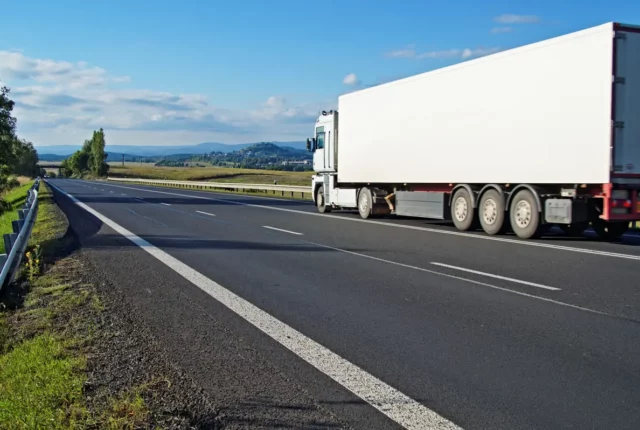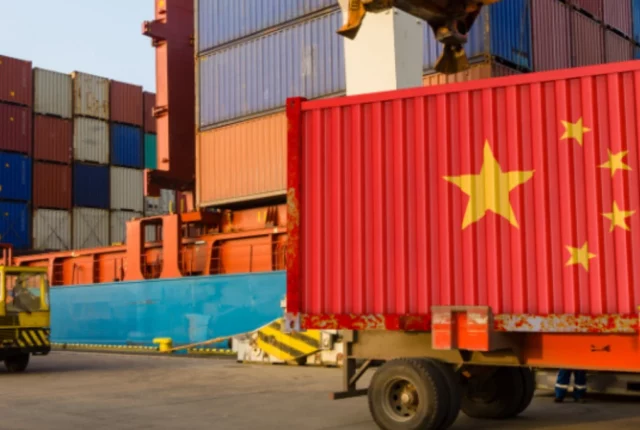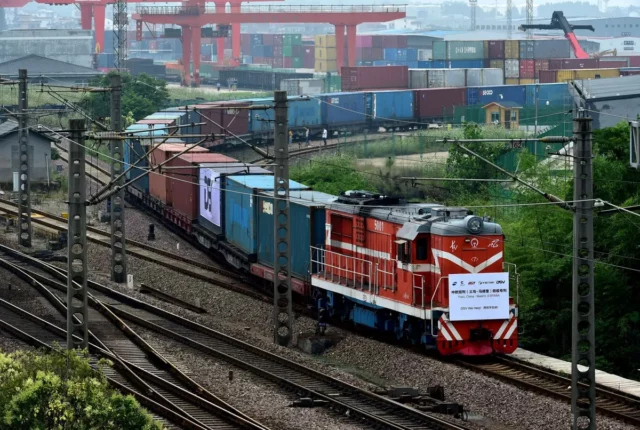
A Shipper’s Guide to Rail Freight Logistics in the USA
Rail freight logistics in the United States is a crucial component of the nation’s supply chain infrastructure.
Spanning over 140,000 miles of track, the U.S. rail network connects ports, manufacturing hubs, and distribution centers across the continent. For decades, rail has moved everything from coal and steel to automobiles and consumer goods efficiently and cost-effectively.
In recent years, interest in rail shipping has surged as companies seek sustainable logistics solutions and ways to reduce costs in a competitive market. Whether you’re new to freight shipping or looking to diversify your logistics channels, this guide will help you navigate the essentials of rail freight in the U.S.
Why Choose Rail Freight for Shipping?
Rail freight is often chosen for its:
- Cost-efficiency: Trains can move large volumes over long distances at a lower cost per ton-mile compared to trucks.
- Environmental impact: Trains emit fewer greenhouse gases and are more fuel-efficient.
- Scalability: Rail can handle high volumes, making it ideal for bulk commodities and industrial goods.
It’s particularly beneficial when shipping over 500 miles or when transporting goods between major hubs.
Key Players in the U.S. Rail Freight Industry
Understanding the players helps in selecting the right service:
- Class I Railroads: These include Union Pacific, BNSF Railway, CSX, and Norfolk Southern, covering national and long-haul routes.
- Regional Railroads: Serve intermediate distances and act as connectors.
- Short Line Railroads: Focus on local delivery and first-mile/last-mile service.
These railroads often interconnect, offering seamless coast-to-coast freight movement.
Common Types of Rail Freight Shipments
- Intermodal: Involves containers or trailers that can switch between truck and rail, offering flexibility.
- Bulk Cargo: Includes commodities like grain, coal, and chemicals moved in specialized cars.
- Carload Freight: For items that don’t fill an entire train but need specialized equipment like flatcars or boxcars.
How the Rail Freight Process Works
- Booking: A contract is created with the rail carrier.
- Loading: Goods are loaded at origin terminals.
- Transport: Railcars travel via the carrier’s network.
- Tracking: Real-time updates provided through carrier systems.
- Delivery: Cargo is offloaded at the destination terminal or transferred to trucks for last-mile delivery.
Essential Documents for Rail Shipping
- Bill of Lading (BOL): A legal contract between the shipper and carrier.
- Waybills: Internal documents used by the railroad.
- Shipping Instructions: Details for routing, handling, and delivery.
Accurate paperwork prevents delays and fines.
Rail Freight vs. Trucking: What to Consider
| Factor | Rail Freight | Trucking |
| Cost | Lower for long distances | Higher per mile |
| Speed | Slower for short hauls | Faster door-to-door |
| Flexibility | Less direct routing | Highly flexible |
Choose based on cargo volume, urgency, and budget.
Regulations and Compliance in Rail Freight
Rail freight is governed by:
- Federal Railroad Administration (FRA) – Oversees safety.
- Surface Transportation Board (STB) – Regulates rates and services.
- Hazmat Rules – Govern transportation of hazardous materials.
Shippers must stay compliant to avoid penalties.
Intermodal Transportation: Combining Rail and Truck
Intermodal shipping combines the cost-effectiveness of rail with the flexibility of trucking. It’s ideal for e-commerce, retail, and import/export operations. Containers are seamlessly transferred between modes, cutting costs and delivery times.
Costs and Pricing Structure in Rail Freight
Rail pricing depends on:
- Distance and volume
- Commodity type
- Fuel surcharges
- Accessorial fees (e.g., detention, demurrage)
It’s best to get quotes from multiple carriers or use a freight broker for competitive rates.
Benefits and Drawbacks of Rail Freight
Benefits:
- Lower cost per ton-mile
- Environmentally friendly
- High-volume capability
Drawbacks:
- Slower transit for short distances
- Limited rail access in some areas
- More complex scheduling
Technology in Rail Freight Logistics
- Real-time GPS tracking
- AI-powered route optimization
- Digital documentation
- Predictive maintenance
These technologies increase efficiency and reliability for shippers.
Choosing the Right Rail Freight Provider
Look for:
- Nationwide network
- Experience with your cargo type
- Transparent pricing
- Strong customer service
Using a fourth-party logistics (4PL) provider can simplify the process.
Preparing Your Cargo for Rail Shipping
- Use durable, tamper-proof packaging
- Secure items to prevent shifting
- Label clearly with addresses and handling instructions
- Follow weight and size regulations for railcars
Proper preparation ensures smooth delivery and avoids damage.
Final Thoughts
Rail freight logistics offers a dependable, cost-effective, and sustainable shipping solution for U.S. shippers. Whether you’re transporting bulk goods, industrial components, or containerized freight, understanding the process and choosing the right freight partners makes all the difference. With growing infrastructure and technology, rail continues to be a smart logistics choice.
FAQs
Is rail freight cheaper than trucking?
Yes, especially for long-distance and bulk shipments.
What’s the minimum shipment size for rail?
There’s no fixed minimum, but larger volumes are more cost-effective.
Can rail be used for international shipping?
Yes, through intermodal terminals connecting to ports.






